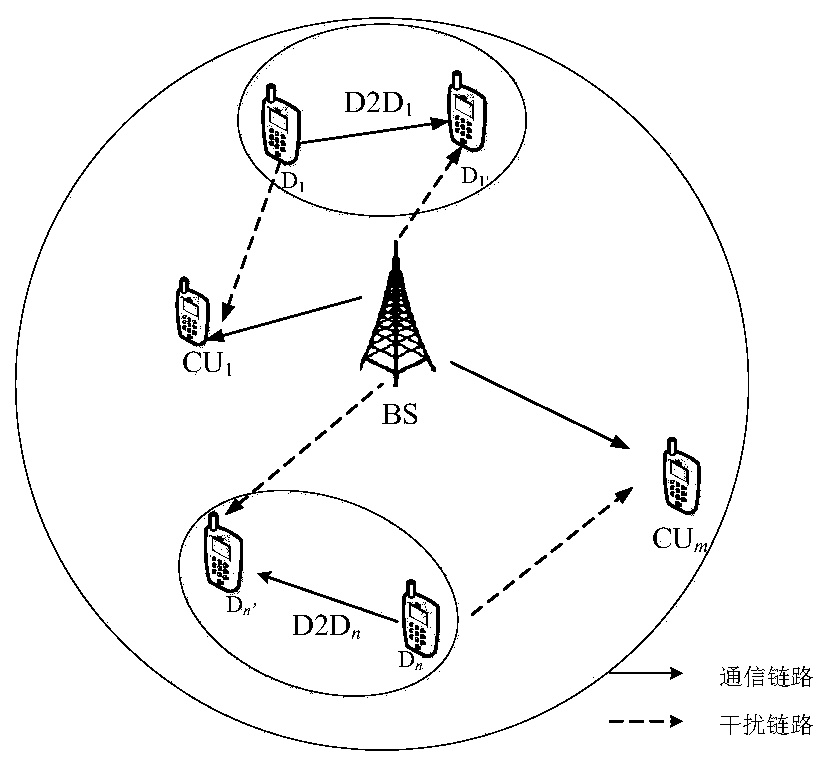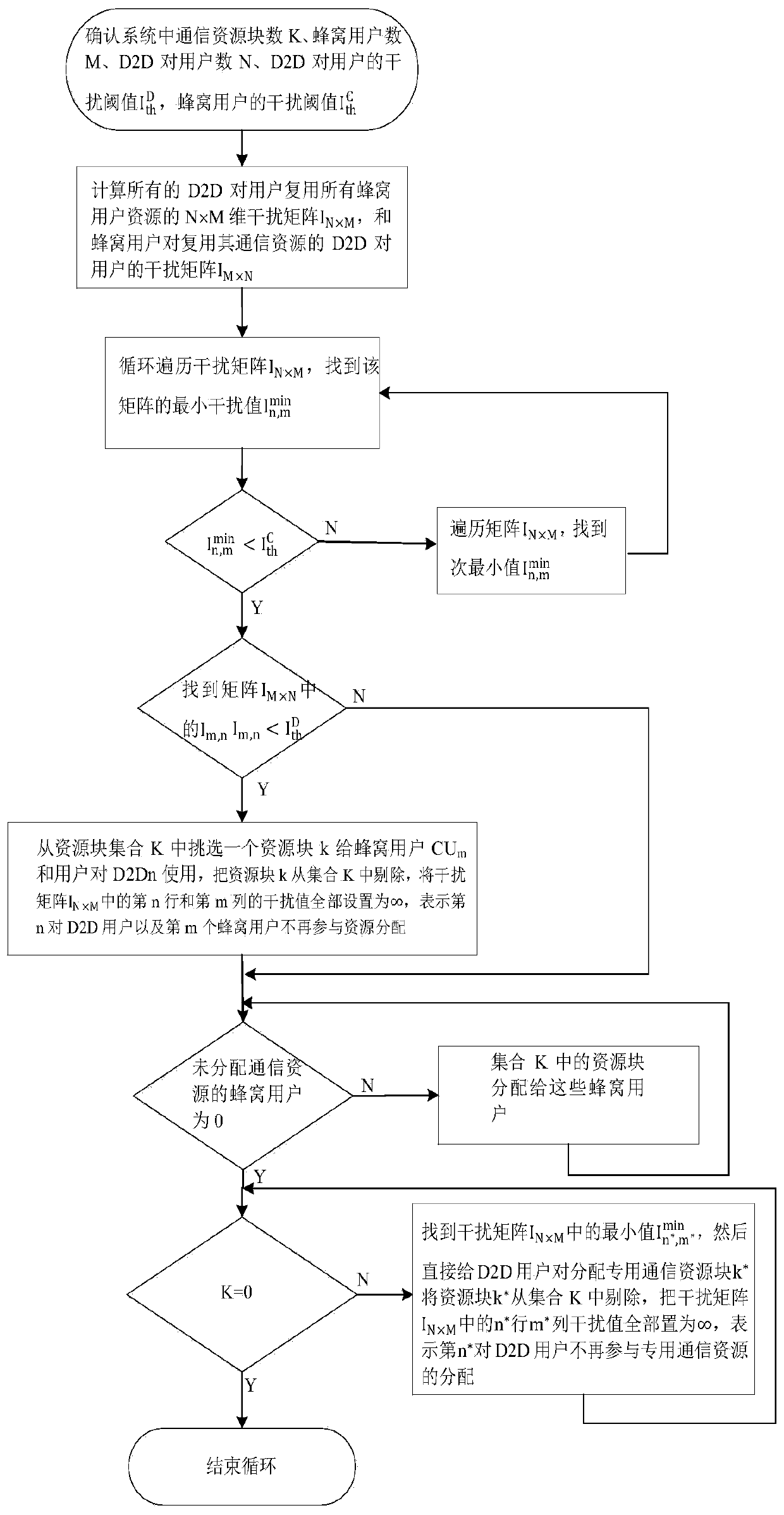A D2D communication resource allocation method based on cellular network
A technology of communication resource allocation and cellular network, which is applied in the field of D2D communication resource allocation based on cellular network, can solve problems such as not considered, and achieve the effect of reducing the complexity of the algorithm
- Summary
- Abstract
- Description
- Claims
- Application Information
AI Technical Summary
Problems solved by technology
Method used
Image
Examples
Embodiment Construction
[0027] The present invention will now be further described in conjunction with the accompanying drawings. The accompanying drawings here are only used to provide a further understanding of the present invention and constitute a part of the application. The schematic embodiments of the present invention and their descriptions are used to explain the present invention and do not constitute undue limitation of the invention.
[0028] For the convenience of research, only the scenario where D2D users reuse downlink cellular link resources is considered. There are M cellular users (CU1, CU2, ..., CUm, ..., CUM) and N pairs of D2D users (D2D1, D2D2, ..., D2Dn, ..., D2DN) in a single cell, and each D2D pair includes D_n and D_(n ^'), such as figure 1 shown. Cellular users only receive interference from D2D users whose communication resources are reused, that is, the nth pair of D2D users reuses the channel resources of the mth cellular user, and the pair of D2D users will interfere...
PUM
 Login to View More
Login to View More Abstract
Description
Claims
Application Information
 Login to View More
Login to View More - R&D
- Intellectual Property
- Life Sciences
- Materials
- Tech Scout
- Unparalleled Data Quality
- Higher Quality Content
- 60% Fewer Hallucinations
Browse by: Latest US Patents, China's latest patents, Technical Efficacy Thesaurus, Application Domain, Technology Topic, Popular Technical Reports.
© 2025 PatSnap. All rights reserved.Legal|Privacy policy|Modern Slavery Act Transparency Statement|Sitemap|About US| Contact US: help@patsnap.com



